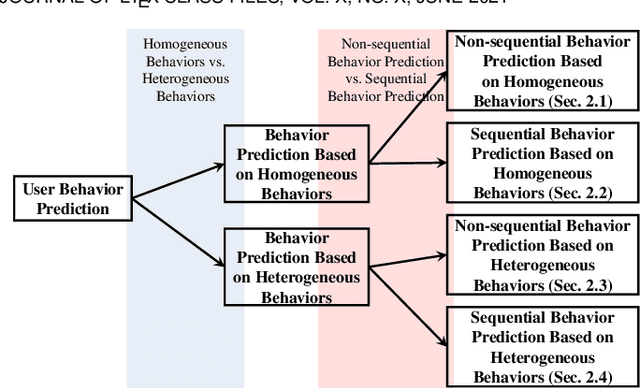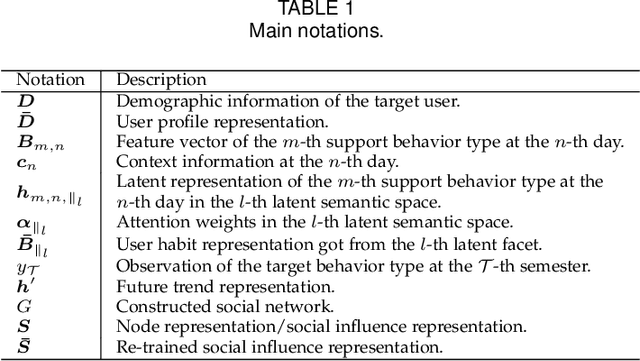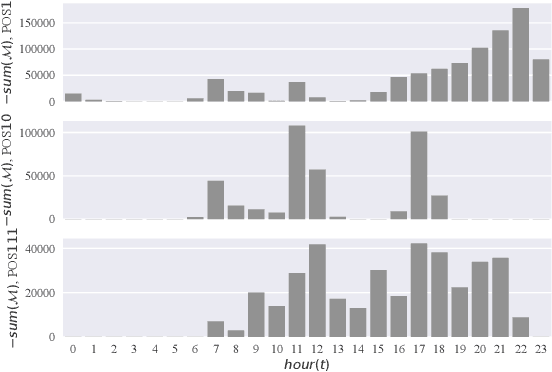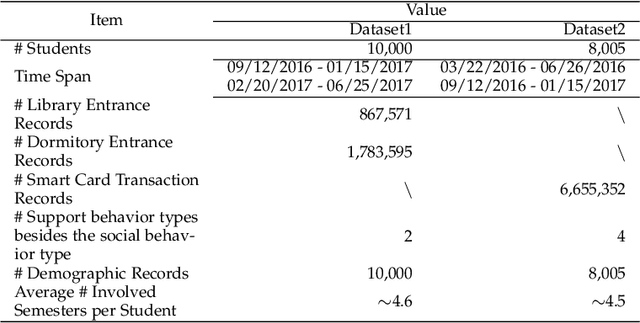Jianyu Ding
Modeling Multi-aspect Preferences and Intents for Multi-behavioral Sequential Recommendation
Sep 26, 2023Abstract:Multi-behavioral sequential recommendation has recently attracted increasing attention. However, existing methods suffer from two major limitations. Firstly, user preferences and intents can be described in fine-grained detail from multiple perspectives; yet, these methods fail to capture their multi-aspect nature. Secondly, user behaviors may contain noises, and most existing methods could not effectively deal with noises. In this paper, we present an attentive recurrent model with multiple projections to capture Multi-Aspect preferences and INTents (MAINT in short). To extract multi-aspect preferences from target behaviors, we propose a multi-aspect projection mechanism for generating multiple preference representations from multiple aspects. To extract multi-aspect intents from multi-typed behaviors, we propose a behavior-enhanced LSTM and a multi-aspect refinement attention mechanism. The attention mechanism can filter out noises and generate multiple intent representations from different aspects. To adaptively fuse user preferences and intents, we propose a multi-aspect gated fusion mechanism. Extensive experiments conducted on real-world datasets have demonstrated the effectiveness of our model.
Incorporating Heterogeneous User Behaviors and Social Influences for Predictive Analysis
Jul 24, 2022



Abstract:Behavior prediction based on historical behavioral data have practical real-world significance. It has been applied in recommendation, predicting academic performance, etc. With the refinement of user data description, the development of new functions, and the fusion of multiple data sources, heterogeneous behavioral data which contain multiple types of behaviors become more and more common. In this paper, we aim to incorporate heterogeneous user behaviors and social influences for behavior predictions. To this end, this paper proposes a variant of Long-Short Term Memory (LSTM) which can consider context information while modeling a behavior sequence, a projection mechanism which can model multi-faceted relationships among different types of behaviors, and a multi-faceted attention mechanism which can dynamically find out informative periods from different facets. Many kinds of behavioral data belong to spatio-temporal data. An unsupervised way to construct a social behavior graph based on spatio-temporal data and to model social influences is proposed. Moreover, a residual learning-based decoder is designed to automatically construct multiple high-order cross features based on social behavior representation and other types of behavior representations. Qualitative and quantitative experiments on real-world datasets have demonstrated the effectiveness of this model.
 Add to Chrome
Add to Chrome Add to Firefox
Add to Firefox Add to Edge
Add to Edge